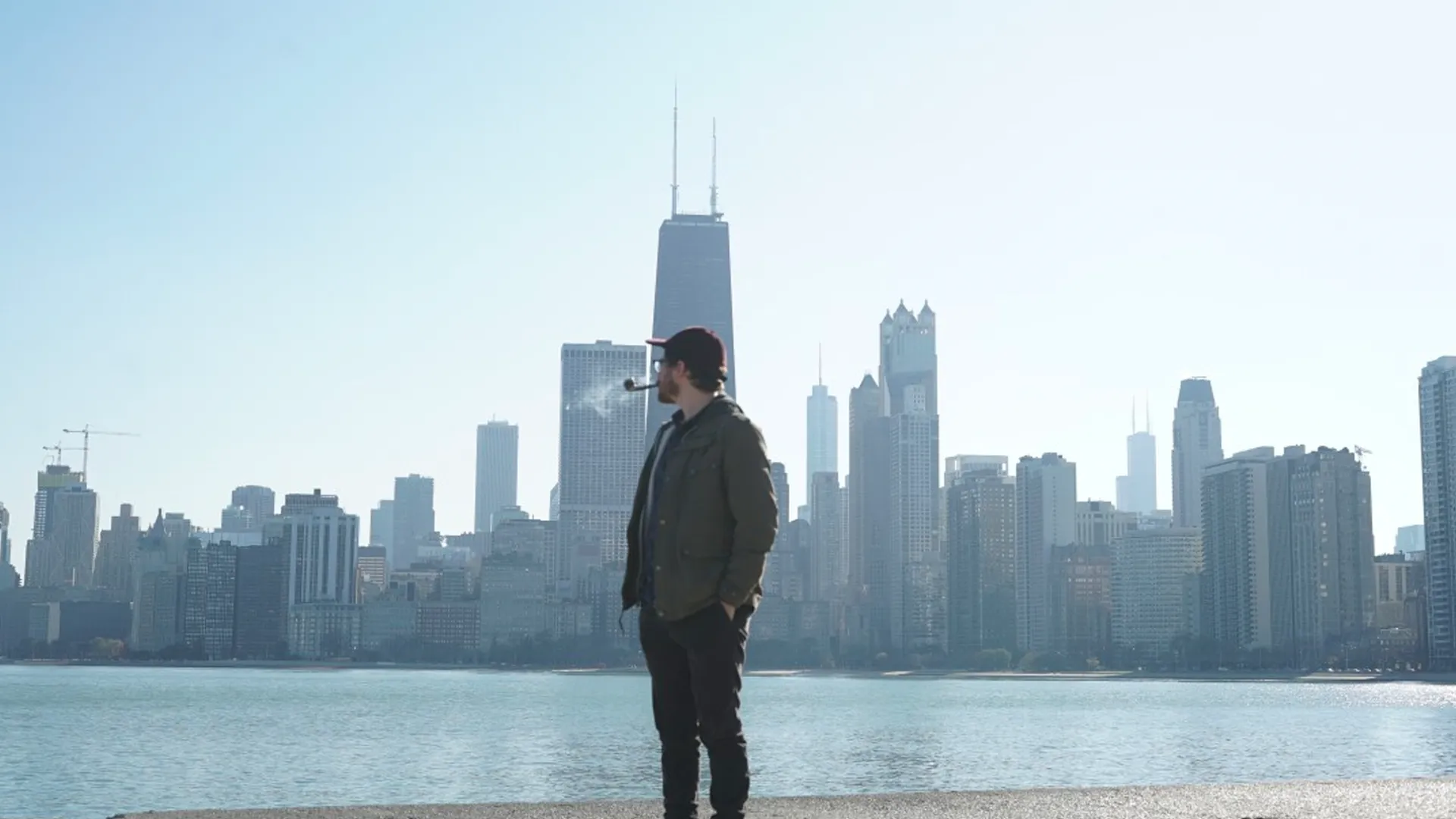
20 May What makes a compelling story?
I’m often fighting a battle.
Where do my unhinged creativity and ideas start, and where does the structure come into play?
Or better yet, where does the motivation of a story and character/answering why and the meaning come in, and where should the description and the what play out? This applies both to scripted narrative series like Breaking Bad, and also your next video project that you desperately want your social media following to watch, share, like, smileyface, and give cartoon clappy-hand clicks.
The battle I’m fighting is usually from within myself. I want to see stories that are in my head come to fruition. I want to hear music that I experience in my dreams be blasted into my daytime reality. Everything within my truest self wants to yank out the world that is within and showcase it in art-form.
Why? Well, recently I took a course called the Science of Storytelling by Muse Storytelling, and part of the final assignment was figuring out just that – to figure out my big WHY.
But first, I should mention that I went into this course with the intention that I would better understand story structure. Because I love writing, I love films, and I want to finish my screenplays, I know that I hit walls right around the final “act” or so. I can write dialogue all day long, give characters things to think, say, or do, but eventually it seems to get convoluted because I’m not really working from a greater framework. I used to think that the framework would limit my creativity, but I now feel that without it, I’d just keep doing what I’ve always done – have bursts of creative inspiration but then never finish anything once the excitement wears off. Does anyone relate?
The first, very simple structure that was presented was the
4 PILLARS OF COMPELLING STORIES
PEOPLE: The character(s) in your story – A strong lead character, who emotionally carries the story and draws in the audience.
PURPOSE: This is the “why” behind the story in order to actually leave an impact, be remembered, and have true objective within the story.
PLOT: This is the story’s overall structure and creates engagement from start to finish. (this is what I’ve needed the most help with)
PLACES: This builds trust with the audience by authentically showing rather than telling.
Nothing monumentally ground breaking or hard to grasp here, but even those 4 categories help balance out a story, and expose areas that may be weaker than others. However, depending on the type of story, one of these areas may be much more highlighted than others (such as the show The Office for example where it’s really about the people first, and purpose last)
Now to sprinkle in a little bit of my own WHY for why I want to tell stories – I should be clear that it’s best to create a separate article for this, as the process of finding this out took me a little bit, and this article will already have a lot of information.
Basically, from a young age I was always living in my own environment fueled by imagination. I was existing on 2 planes at once constantly, and thought that’s just how people live. So if I could zone out playing legos for hours, draw, or slam out some tunes on the piano, that was time well spent. This creates a highly active creative person, with very little organizational skill. Oh, and ADD and ADHD tendencies. This does not result in an ideal “student”.
Let me just create stuff. Let me write stories. Let me listen to stories, read, and watch movies. So yeah, if storytelling didn’t exist, or filmmaking wasn’t a thing, or music was nonexistent, I probably would be too, in some form.
Ok, back to the COMPELLING STORIES article that I’m writing. I hope this is helpful for writers, creative people, marketing directors, social media gurus, and people who generally communicate and need to create some real connections with others. Always tell stories.
Within the first PEOPLE PILLAR, there are some helpful hints to having a strong main character. That main character could be YOU, if you’re working on telling your story in some way, which you should – because nobody else has it.
BIG 3 THINGS in great MAIN characters
DESIRE: Creates Empathy, What a character wants beyond what they have
MOTIVATION: Creates Trust, The why behind the character’s desire
UNIQUENESS: Grabs Attention, What is different about the character
STRONG ADDITIONAL CHARACTERS
The Heart, The main character and central connection
Helpers – Secondary characters that help tell the story of the Heart
Experts – Sources of information to strengthen the Purpose of your story
After understanding the main character(s) in your story, getting down to the purpose of what you’re wanting to convey is vital.
“If you don’t know where you’re going, you’ll never know if you’ve arrived.”
The PURPOSE pillar is all about the intention – getting clarity and being aligned up front on the meaning of your story.
Choose your Keywords, and use them to increase intention
(Do this at the BEGINNING of a project)
Define your purpose as 5 Story Keywords
How to choose your 5 Story Keywords
1. Conduct story finding to understand
2. Use the provided prompts to generate potential keywords
3. Select one keyword per prompt
4. Align keywords with all stakeholders
Here’s 5 prompts to help get these 5 keywords
INSPIRATION: What is most inspiring about the story?
DIFFERENCE: What makes this story unique or different?
AUDIENCE: Who is this story intended for?
FEELING: How do you want your audience to feel?
ACTION: What action do you want your audience to take?
I find it helpful to use these key word questions to define your main character(s) as well.
This starts to all sound fairly marketing heavy, which was a bit of a surprise for me seeing as I expected more of an overall story overview, history, neurology, and writing exercise from this course. Seeing as this is a blog post though, you marketers should be all over this.
This part was especially difficult for me to nail down, but I think particularly helpful.
6 ESSENTIAL PLOT POINTS
Specific plot points bring you into one moment in great detail. General plot points summarize a great deal of specific plot points to save time. Specific are preferred, when possible. (Humanity is inside the specific)
1. HOOK: The very beginning of your story that needs to immediately engage your audience. Leverage uniqueness to find the greatest Hook. (You have 3 seconds)
2. CONFLICT: the moment the Heart, or main character, runs into a conflict. This creates a question for the audience.
3. INITIATION: The moment the Heart decides to take on the conflict, which marks the transition into the journey.
4. JOURNEY: Significant moments or milestones that occur as your Heart attempts to overcome the Conflict. Difficult journey points help to illuminate the character’s Desire.
5. RESOLUTION: The outcome of the conflict, whether the Heart succeeds or fails. This is the emotional crescendo of the film and serves as the transition into the ending.
6. JAB: The call to action or the greater takeaway that you leave your audience with. Your chance to connect back to the overall growth/change experienced by your character.
Marketing is stories needing to be shared. Adding stories that correlate with your brand is the strongest.
Stories about MEANING are vital. Identify with your character.
Lastly,
THE FOUR LAYERS OF PLACE
Objects: A single object or item I.e. a doorknob
Environments: Locations, settings, or a collection of objects I.e. a living room
Situations: Scenarios or actions that people are taking I.e. a conversation
Time: When a moment took place, I.e. seasons, time of day, etc.
All 4 layers of Place always exist in everything, but not all layers will be relevant
How to uncover strong and unexpected places:
1. Get vivid descriptions from your characters where plot points happened.
2. Create a daily routine map of your character’s day.
3. Be an anthropologist and “Listen to the walls”
Find the things that represent where your story lives.
Now there’s a lot to digest here, and I could keep on writing and listing out what I think is most valuable, what I learned from this course, and my own opinions, but I think it’s long enough.
Ultimately, we need to understand ourselves, and understand our own story before all of this really clicks. Tell your story, and keep telling it. Split it into 6 plot points, understand your true desire and motivations and unique qualities. Because this structure is ultimately the bones that need a beating heart and a brain and everything else before it really moves people.
For myself, All my seemingly scattered passions and interests, some of which I talked about up above – all collide within filmmaking. Visual art, music, sound, story, acting, photography, etc. It’s the ultimate art form, communicative tool, storytelling device, and entertainment mechanism.
Sometimes the simplest story can change our lives. It’s the way it was told. The way it incorporates some of these elements listed here that becomes powerful.
I talk to so many business owners and brand reps, marketers, etc. who can talk about what they do, what they have done, what their brand does all day long. That’s great, and obviously important, but it’s not getting deep enough. So don’t just look at what you’ve done, what you do currently, and what your company does, and think that you can shape a compelling story out of just that.
Ask yourself and your team, your significant other, your family – Why do I do these things? Why have I done these things in the past? What do I really desire? What do I really believe? What is the real purpose behind this organization? Why is that desire there? etc.
Trust me, I ask people these questions all the time but when it comes to asking myself, it’s tough. My lovely girlfriend was incredibly helpful in helping me find why I truly want to be a writer/director and tell original stories. I thought I knew, but after asking myself why so many times and thinking I understand myself, something deeper emerges. Sometimes other people close to you see it better than you see it yourself.
Next article I write will be a more detailed account of answering that question.
Let me know if you find any of this helpful and/or if you have questions. I’m all about creating videos and writing things that start conversations rather than dumping information.
Remember, stories are all we have to try to understand our current reality. Story structure is how we best learn, communicate, and connect.
Do you need help getting your video project off the ground? Let’s talk. Start a Conversation.
